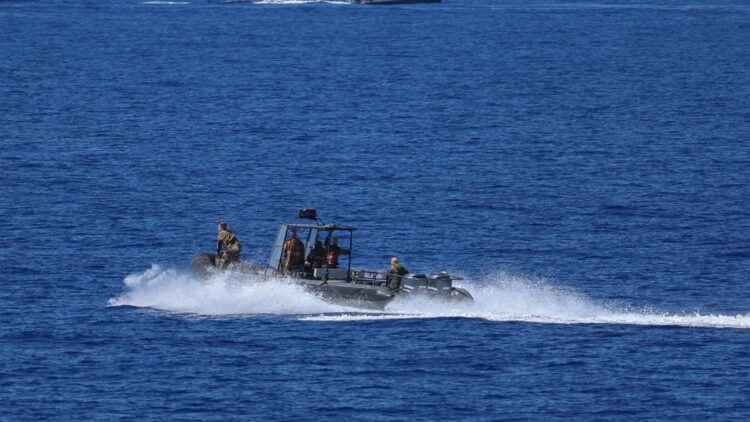On Monday, prosecutors from Finland accused the captain and two officers of sabotaging a tanker that is thought to be a part of Russia’s “shadow fleet” by dragging an anchor along the Gulf of Finland’s seabed last December and cutting five underwater cables, resulting in damage worth tens of millions of euros. Events in the Baltic Sea have recently attracted popular and political interest. A foreign tanker, its senior crew, and accusations of intentional sabotage are all involved in the criminal inquiry that started as a technical issue. In addition to raising questions about maritime safety, the developments have heightened tensions.
Officers of the Eagle S tanker are charged by Finland for damaging underwater cables in the Gulf of Finland
Finland’s national prosecutor’s office said on Monday it had brought charges against the captain and first and second officers of the Eagle S oil tanker over the cutting of undersea cables in the Gulf of Finland in December. The Georgian and Indian nationals are suspected of aggravated criminal mischief and aggravated interference with communications by dragging the ship’s anchor for around 90 km (56 miles) across the seabed.
The defendants, who are not permitted to leave Finland, have denied committing the offences and consider that Finland also lacks jurisdiction in the case as the incident took place outside Finnish territorial waters, it said. Finnish authorities have said the Cook Islands-registered Eagle S broke the Estlink 2 undersea power cable connecting Finland and Estonia, as well as four internet lines.
Cable damage raised Baltic Sea sabotage concerns and caused €60 million in losses
The prosecutors’ office said,
“The owners of the cables have suffered a total of at least 60 million euros ($70 million) in immediate damage in the form of repair costs alone.”
The Baltic Sea region has been on high alert for sabotage after a string of outages of power cables, gas pipelines and telecoms, although subsea infrastructure is also subject to technical malfunctions and outages caused by accidents. The Eagle S disruption caused serious risks to energy supply and telecommunications in Finland, although services were secured via alternative connections, the prosecutors’ statement said.
The broader importance of safeguarding underwater infrastructure
Although they are frequently overlooked, underwater cables are essential to the modern world. They transfer phone calls, internet data, and even international financial transactions. Intentional or unintentional damage to them might have fatal repercussions. Effects of damaged cables:
- Interrupting international communications.
- Financial losses for companies that depend on data transfers.
- Possible intensification of international political conflicts.
- It can also affect resources such as green hydrogen to slow down and endanger climate goals.
In this instance, immediate worries about regional security were raised by the cuts to the Finland–Estonia cables. In recent years, the Baltic Sea has emerged as a key arena for strategic competition, and both governments and defence organisations keep a careful eye on incidents involving foreign vessels. Although Finnish officials have emphasised that the probe adheres to due process, it is impossible to overlook the geopolitical context.
A lawyer for United Arab Emirates-based Caravella LLC FZ, the owner of the Eagle S, has previously said Helsinki lacked jurisdiction to intervene in the case. The lawyer for the company did not immediately respond to a request for comment on Monday. The prosecutors’ office said a local court would set a date for hearing the case and, if necessary, determine whether it falls under Finnish jurisdiction. The case serves as a warning outside of the courts of how susceptible vital infrastructure might be, especially during times of calm and in times when the UN urges Australia and Turkey to resolve the COP31 dispute.
GCN.com/Reuters


